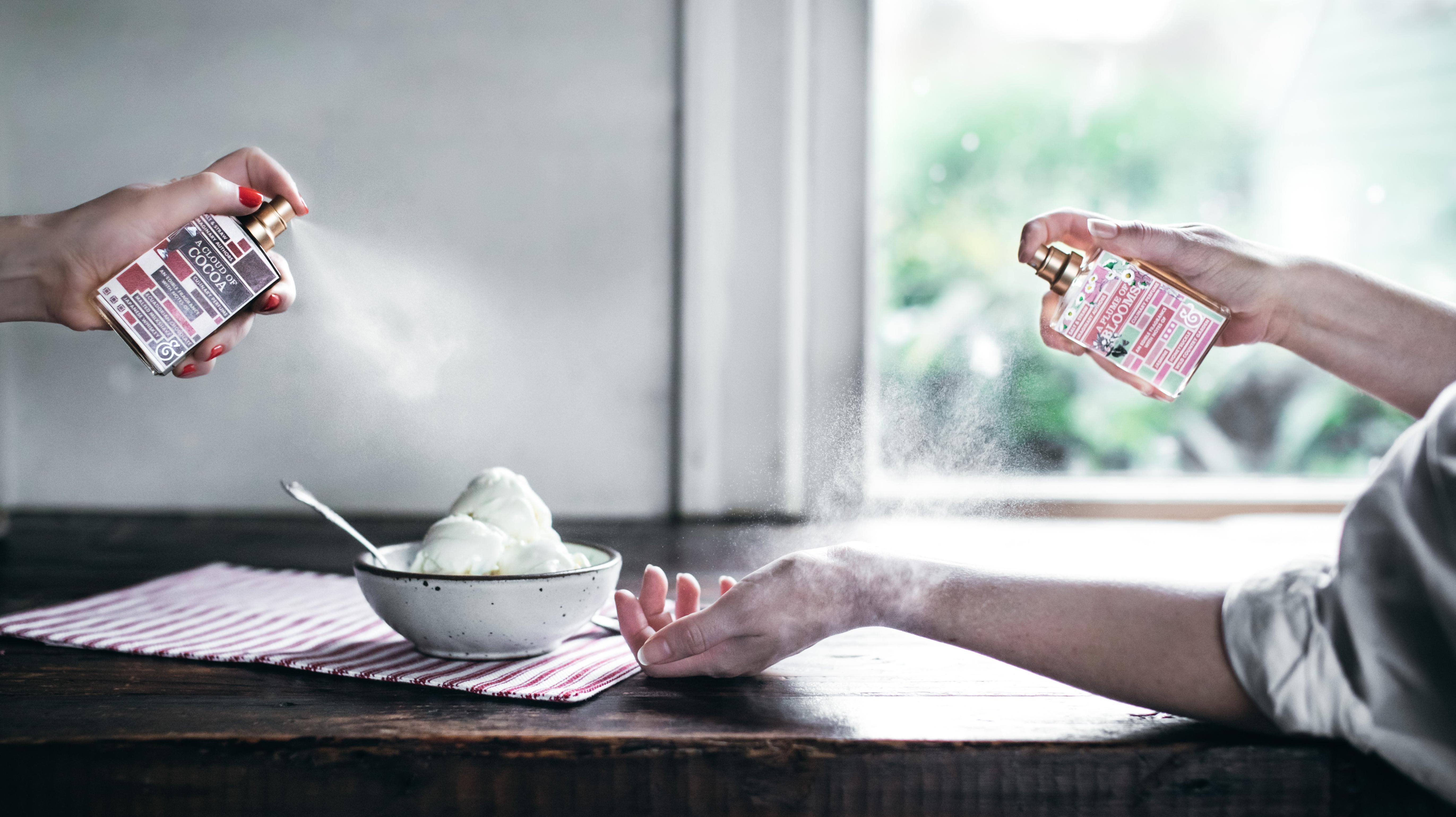Are Food-Enhancing Perfumes The Next Big Thing?
Two recent releases make the case for more scent-focused flavorings.
This week, not one but two brands announced the release of flavor-enhancing perfume. In the case of Salt and Straw's Culinary Perfume, the spritz created in partnership with Imaginary Authors is not just for smelling, but is completely edible. The Portland-based ice cream company is encouraging customers to spray A Swoon of Citrus, A Cloud of Cocoa, or A Plume of Blooms straight onto their ice cream for an added layer of flavor, or to simply wear it as perfume to smell like dessert. And it actually doesn't feel like too wild of a move for a company that is constantly experimenting with odd (and often delicious) flavors.
The introduction of Peroni's Italian Spritz Collection, however, is more of a surprise. The beer brand teamed up with luxury fragrance brand Ellis Brooklyn to create a six-pack of gender-neutral sprays. These, though, aren't edible and are meant to enhance the drinking experience by introducing "the smells of Italy."
It's not the first time food and drink brands have gone into the beauty space, but it may be the first time those beauty products are being marketed to be paired directly with the product. It's still a gimmick, sure, but maybe this marks a change for these types of gimmicks to not only make sense but be useful beyond a gag gift.
How perfumes can make food better
Whether or not the perfumes are edible doesn't quite matter (though, of course, we always prefer to eat things whenever possible), because they're reminding us how important smell is to eating and tasting. According to research from the University of Connecticut, flavor is a combination of smell, taste, spiciness, temperature, and texture—but flavor is most closely tied to smell, as much as 80%. We each have between 5,000 and 10,000 taste buds that pick up on five basic tastes: sweet, salty, bitter, sour, and umami. But we can smell up to one trillion scents via 400 scent receptors. The nuances and depths of flavor are perceived by our noses, not our mouths.
It's why many dishes use aromatics to amp up the flavor. When you heat up garlic on the stove before adding other ingredients, for instance, the heat releases the garlic's oil, which brings out its aroma that is then transferred onto whatever you cook in it. If you're perceiving something as too garlicky, that's likely because you're smelling a lot of garlic. It's why when you're stuffed up or sick, things might not have as much flavor as before.
So it makes sense, then, that brands would experiment with reaching the superior sense, especially if they're able to efficiently bottle the smell of ingredients that might be harder to get or mass manufacture. It's an experiment that could prove to be a trend on the horizon that introduces people to flavors they've never tasted—er, smelled—before, and if that's the case, then spray away, baby.
